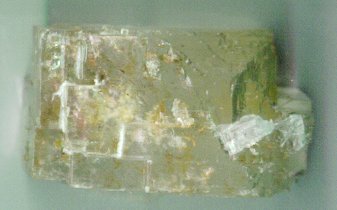Scientific Literacy II
Today, another form of scientific illiteracy. The University of Houston's College of Engineering presents this series about the machines that make our civilization run, and the people whose ingenuity created them.
We all know salt is a major contributor to heart disease, don't we? We know DDT and chlorine cause cancer. We once knew that electric fields caused leukemia. That knowledge has largely evaporated, but salt and DDT still frighten us. Coffee, cyclamates, and Alar have all been called major carcinogens and later been cleared of charges. Being called a carcinogen today is much like being called a communist in 1954. If you were called a communist, you were a communist until you'd proven you weren't.
DDT is like that. Economist Tom DeGregori points out it's a pretty benign chemical. During WW-II we prevented typhus epidemics by DDT spraying, with no side effects. Today it's called a "known carcinogen" based upon almost no evidence. During years of DDT use, liver cancer (which was blamed on DDT) dropped by 32 percent. Hundreds of millions of deaths from malaria and other insect-borne diseases were prevented. DDT remains the cheapest safe protection for most poor countries. Removing it would mean major catastrophe.
While DDT hasn't been cleared as an environmental threat, it has almost eliminated malaria in our hemisphere. But then, most germicides and pesticides come under attack sooner or later. The natural element chlorine was removed from the water supply in Trujilla, Peru, after a 1991 cancer scare. The resulting cholera epidemic afflicted almost a million people.
Now Gary Taubes writes about salt in Science magazine. He titles his article, The (Political) Science of Salt. For thirty years we've been hearing that salt increases the risk of heart attack. Medical organizations have supported the claim up and down the line.
The problem is, salt runs through our food chain and is interwoven with fat in our diets. When we examine data, the independent influence of salt on blood pressure disappears. Taube calls the controversy one between requirements of public health policy and of good science. It started when a 1972 study of rats linked salt to high blood pressure. Since then half the studies suggest a weak link, half show no link. Public health organizations have accepted the first half and ignored the second. And as experimental and mathematical methods have improved, the link has vanished.
DeGregori objects to popular media people making national health policy. In the matter of salt, the National Heart, Lung, and Blood institute is about to convene yet another study panel. One noted doctor says this time he hopes we'll "let science drive the system rather than opinions."
Of course it comes down to scientific literacy. When we don't look to the methodical process of scientific inquiry for knowledge, we lay ourselves open to being misled over and over. The first and last marker of scientific literacy has always been doubt. Science means holding on to skepticism, especially when we want to believe.
I'm John Lienhard, at the University of Houston, where we're interested in the way inventive minds work.
(Theme music)
Taubes, G., The (Political) Science of Salt. Science, Vol. 281, 14 August, 1998, pp. 898-907.
DeGregori, T. R., Counter to Conventional Wisdom: In defense of DDT and Against Chemophobia. Rockwell Lecture, University of Houston, August 26, 1998.

Rock salt crystal from Poland's Wieliczka
Salt Mine (scanned at twice actual size)